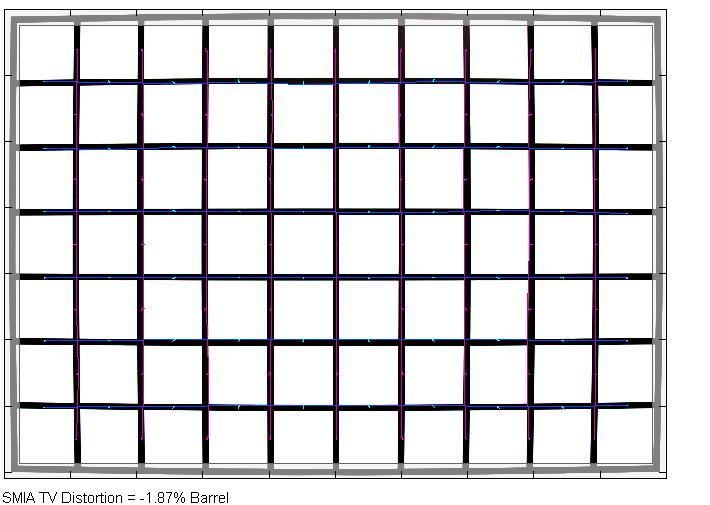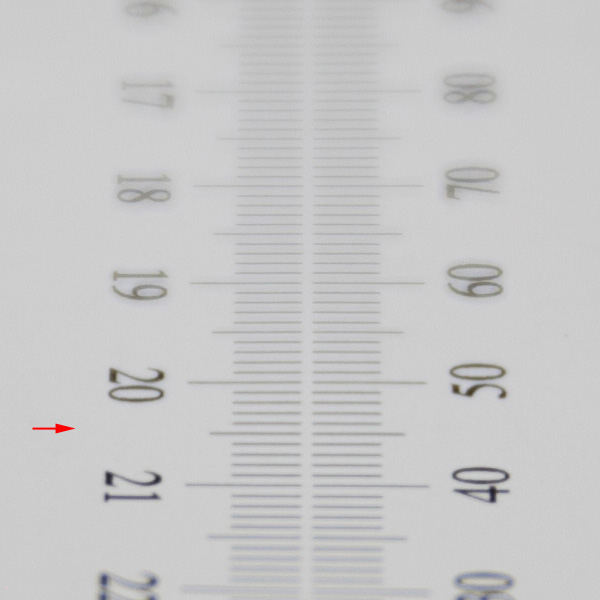|
Canon EF 24-70mm f/4 USM L IS - APS-C Format Review / Lab Test - Analysis |
|
Lens Reviews -
Canon EOS (APS-C)
|
|
Page 2 of 2

Distortion
The distortion characteristic is eased on APS-C cameras because the critical outer image region is beyond the relevant image circle. At 24mm there's only a medium amount of barrel distortion (~1.8%) whereas in the mid to long range, there is nothing to worry about anymore.
|
Move the mouse cursor over the focal length text marks below to observe the respective distortion
|
| 24mm |
40mm |
70mm |
|

|
Vignetting
The sweet spot effect is even more produced with respect to vignetting. At 24mm and 40mm, it is really negligible whereas you may spot of hint of light falloff at 70mm @ f/4.

MTF (resolution)
The resolution characteristic of the Canon EF 24-70mm f/4 USM L IS is impressively high and even throughout the zoom range. The center performance is already excellent at f/4 followed by a very good outer image region.
Stopping down to f/5.6 or f/8 only results in a slight increase in performance (on this very high level). Diffraction effects reduce the quality from f/11 onward at all focal lengths - this is simply a physical limitation. However, even so the results are still on a very good level here.
The lens showed only a minor degree of field curvature. The centering quality of the tested sample was acceptable but not great.
Please note that the MTF results are not directly comparable across the different systems!
Below is a simplified summary of the formal findings. The chart shows line widths per picture height (LW/PH) which can be taken as a measure for sharpness.
If you want to know more about the MTF50 figures you may check out the corresponding Imatest Explanations
Chromatic Aberrations (CAs)
Lateral chromatic aberrations (color shadows at hard contrast transitions) have no practical relevance with a max. pixel width of less than 0.4px at the image borders.

Bokeh
Normally we don't really formally test the bokeh quality of "slow" lenses such as the EF 24-70mm f/4 USM L IS but given its professional nature it's relevant for many customers.
Out-of-focus highlights show a near-circular shape at large aperture settings but the inner zone of these "discs" is quite busy/nervous albeit this is slightly better than in the EF 24-70mm f/2.8 USM L II. The circular shape remains mostly intact till about f/8 (tested at 70mm). The "cat's eye" effect that we observed in the image corners on full format images plays no relevant role on the crop format.
 The quality of the blur in the focus transition zone is good for a standard zoom lens. It's pretty smooth in the background (left crop below) and slightly more nervous in the less critical foreground.
The quality of the blur in the focus transition zone is good for a standard zoom lens. It's pretty smooth in the background (left crop below) and slightly more nervous in the less critical foreground.

Bokeh Fringing / Longitudinal Chromatic Aberrations (LoCA)
Bokeh fringing isn't really a substantial issue in slow speed lenses anymore. The EF 24-70mm f/4 USM L IS shows very marginal traces at f/4 but they are gone at f/5.6.
However, when browsing through the sample crops below you will notice two things:
- the macro performance is not all that great at 70mm @ f/4. There is no really sharp spot here in this image. However, to be fair - it looks very sharp at f/8.
- the focus point shifts SUBSTANTIALLY when stopping down. Or in other words: the lens suffers from residual spherical aberrations (RSA). In close focus situations this is rather poisonous and the problem was affecting images taken at more conventional distances. The user who supplied the lens checked this behavior with a 2nd lens and this focus characteristic was the same here. This is NOT (sufficiently) compensated by the AF. We did AF reference checks during the MTF analysis and there's a decrease in measured resolution (= increase in focus shift) from f/4 to smaller apertures.
Note: The AF was, of course, deactivated during the testing procedure here.
|
Move the mouse cursor over the f-stop marks below to observe the respective LoCAs
|
| f/4 |
f/5.6 |
f/8 |
|

|
These sample portions were taken at ~70mm.
VerdictThe Canon EF 24-70mm f/4 USM L IS is a difficult being with a great technical performance and a worrisome focus characterstic. On APS-C DSLRs it is extremely sharp throughout the range with no significant weakness at any mainstream setting including max. aperture. The marginal amount degree of lateral CAs contributes to the high sharpness perception. On the crop format, there is hardly any light-falloff even at f/4. Image distortions are only just visible at the wide end of the zoom range.The quality of the bokeh is pretty decent but not without flaws in certain situations. Given the moderate max. aperture there is not much bokeh fringing to speak of. The macro feature is pretty nice but avoid f/4 due to the substantial softness here but it is much better at medium aperture settings. The most worrisome flaws are, however, focus shifts - thus if you stop down the focus point is pushed towards the background (Residual spherical aberrations / RSA). This can be a game spoiler in some scenes (specifically close focus) which is also why we stayed short of a "highly recommended" rating.
Typical for modern Canon L lenses, the mechanical quality is a shining aspect, of course, but then you also expect no less from such a pricey beast. The compact size and comparatively low weight is certainly attractive compared to "the lead pipe" - thus the EF 24-70mm f/2.8 USM L II. Canon's USM drive offers an extremely fast AF and lack of noise is highly impressive. The image stabilizer is as efficient as we are used to from other Canon offerings.
However, given the RSA (focus shift) problem, we would rather recommend to go for the Canon EF-S 17-55mm f/2.8 USM IS instead. This lens makes also more sense on APS-C DSLRs.
Update: According to the friendly supplier of the lens, the Canon server was able to fix the RSA issue in the provided sample (makes you wonder how ?). For the time being we can't retest the lens due to time constraints but assuming that the RSAs were not present the optical rating to improve to  . .
|